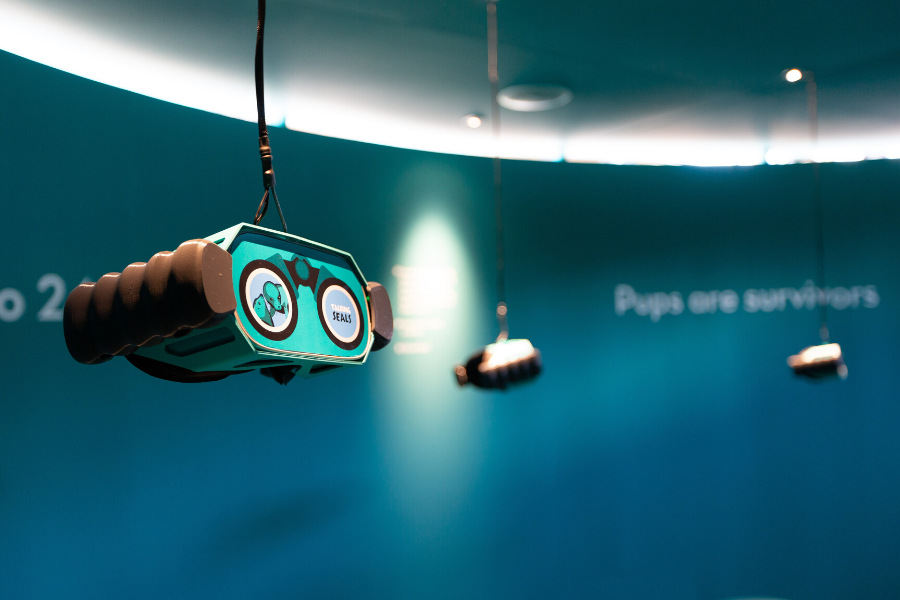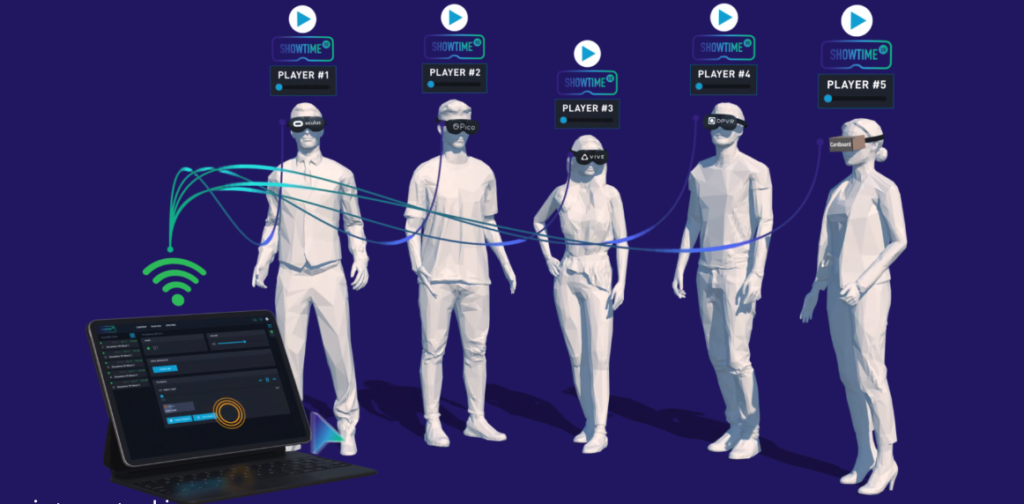Secure: Since our inception as a VR producer, we’ve always grappled with the question of how to position VR headsets within a space. There are, in fact, only a few possibilities. Without permanent cabling, VR headsets can be neatly stored in a case or cabinet. However, when the headsets are fixed to a permanent power supply, the situation changes. In that case, a headset can be placed on a table, hung on a hook, or suspended in the air. After extensive testing, our conclusion was that it’s not ideal to lay a headset on a table or hang it. This often results in the headset not being properly positioned, and frequent placing or hanging can lead to visible damage. The best solution we found was to use a pulley system to suspend the headset entirely. At the top of our Skins, there’s a loop to which the pulley is attached. The Skin, therefore, also serves as a hanging mechanism. The pulley ensures that the headset doesn’t fall to the ground. We also provide these pulleys.
Protect: The primary purpose of our Skins is to safeguard against damage and theft. The aluminum casing provides protection for the vulnerable VR headset itself, which is often used all day and frequently put on and taken off. Visitors frequently grab the headset by the head straps on the sides, which can quickly become loose or break if not supported. The Skins fit snugly around these head straps and hold the movement in place. The buttons are shielded to prevent visitors from accidentally pressing the power button or home button, allowing the headset to operate stably.
Audio: In some VR experiences, audio is of vital importance. With multiple VR headsets and visitors in one space, this can be quite disturbing for the visitor. In such cases, it’s useful to use an external headphone. For some of our models, a headphone holder extension set is available. This allows you to attach your own headphones to the VR setup.







